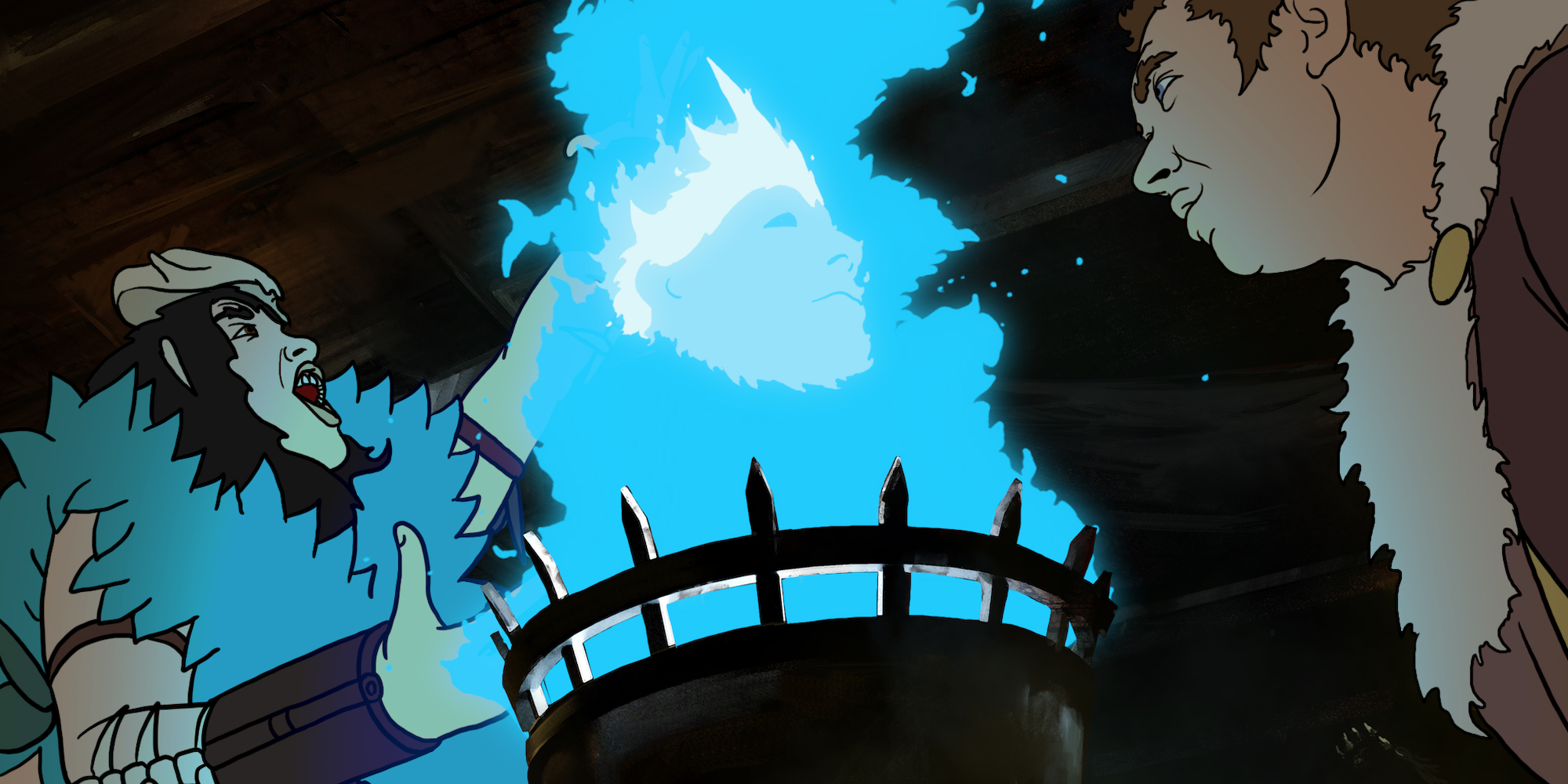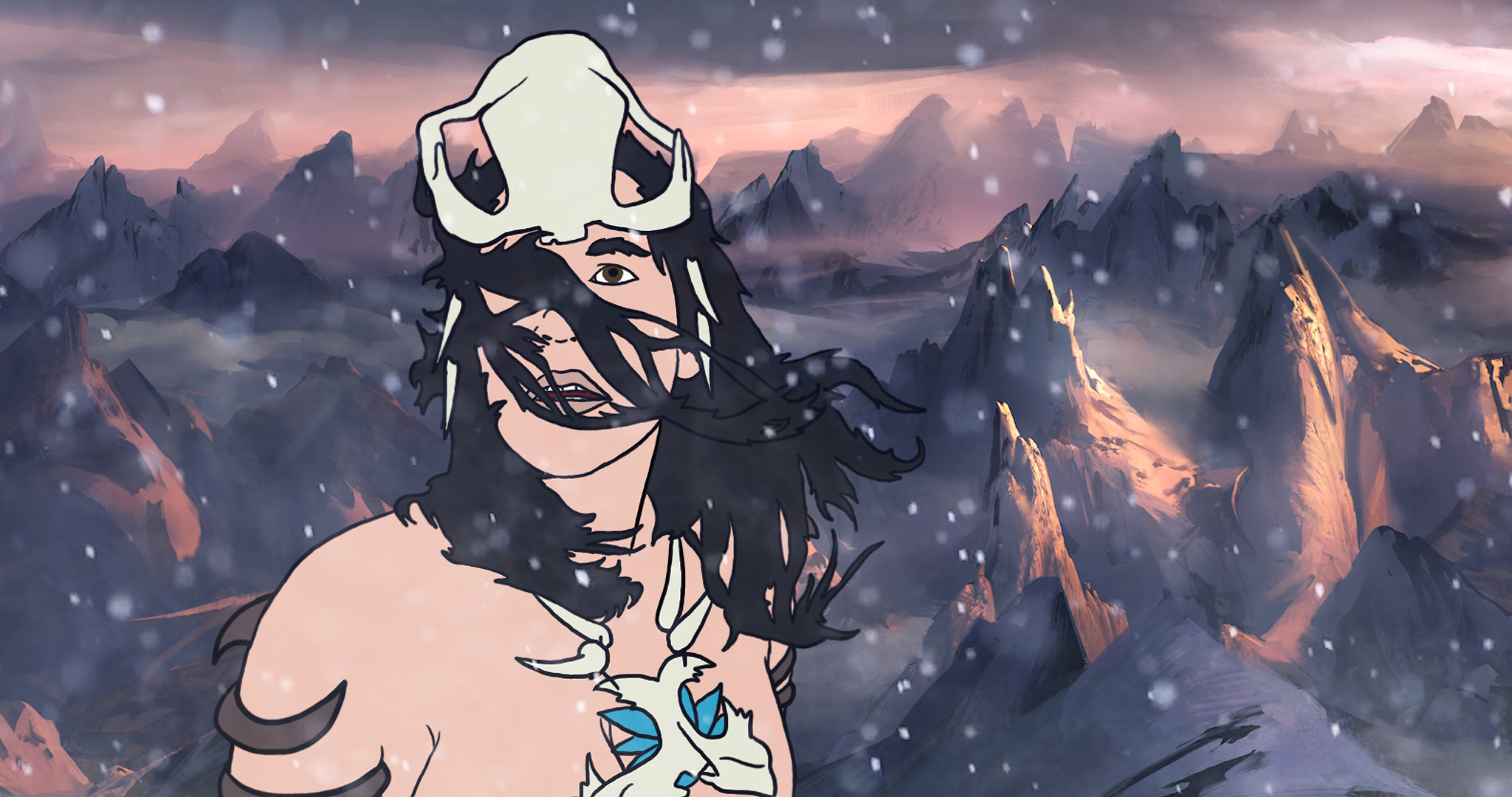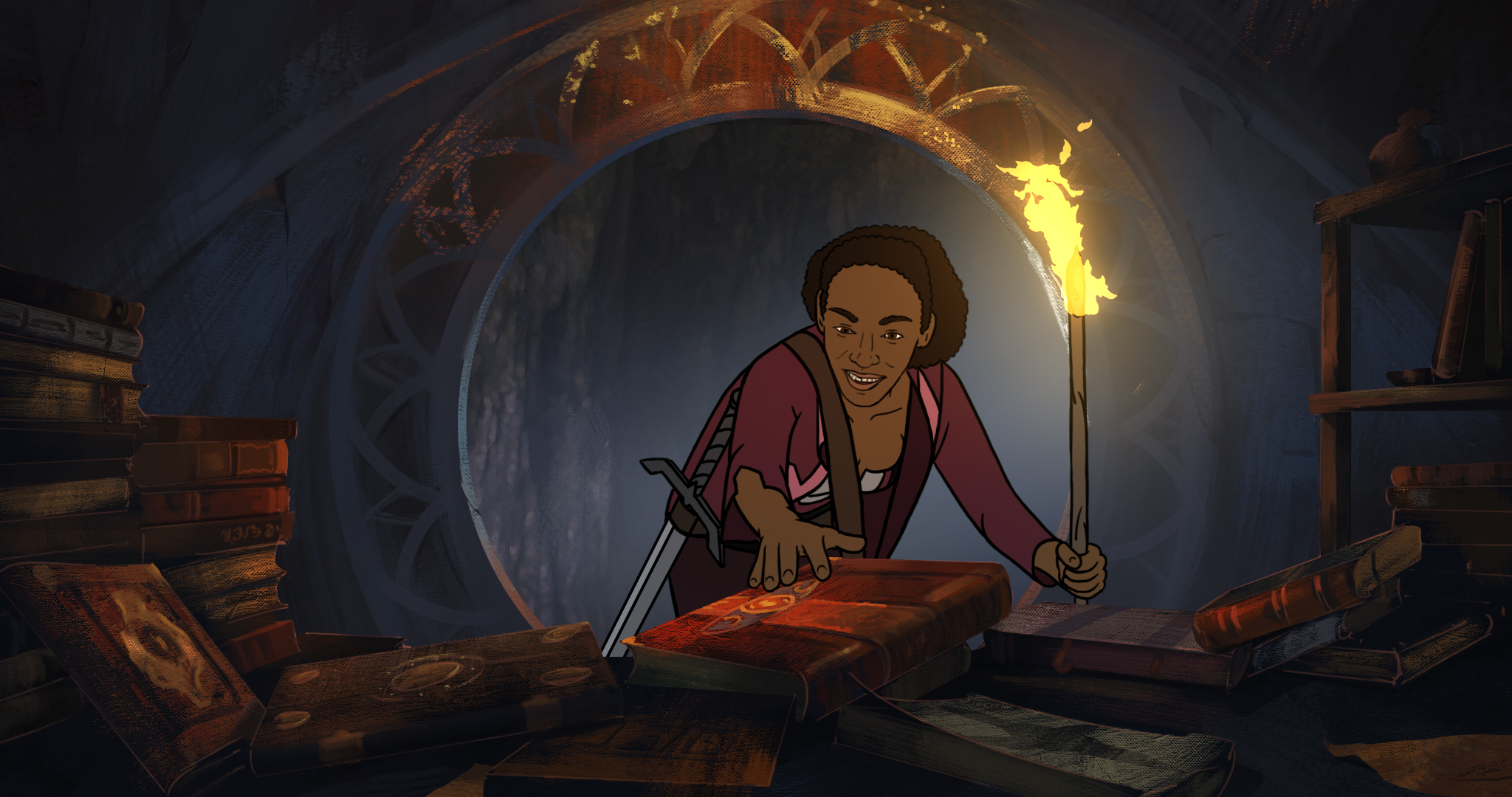The Spine of Night, written and directed by Philip Gellatt and Morgan Galen King, is an homage to a bygone era of animated sword-and-sorcery films. In the '80s, the likes of Fire and Ice and Heavy Metal brought epic fantasy worlds to rotoscoped life and fulfilled adolescent cravings for animated blood and boobs in the days before uncensored anime was readily available in the West. The Spine of Night utilizes a similar rotoscope style to appeal to the same pulpy imagination.
What this stylistic homage mostly lacks is a sense of grittiness. As wonderful as it is that digital technology gives independent creators the ability to more easily make films of this scale, The Spine of Night's computer rotoscoping feels a bit too clean and polished for a world that needs to be rough and lived-in. This cleanness just emphasizes one of the weirder aspects of the rotoscope technique: even though it uses real people for reference, movements nonetheless appear floatier than traditionally animated figures would.
This sort of uncanny valley effect works perfectly for dreamlike reality-warping stories such as A Scanner Darkly or Undone, but the weightlessness is a weakness in an action film. On the positive side, the visuals improve significantly in scenes that play with shadows and darkness; the most visually stunning segment of the movie, the history of the gods, is shown almost entirely through silhouettes. Effects animation sequences of magic, explosions and sickeningly detailed gore are also impressive.
Whatever its flaws, the rotoscoping technique sure does seem fun for the actors. Free from the constraints of a normal film shoot (one has to wonder what the actors wore during the shoot, or if they wore anything at all), stars like Joe Manganiello, Betty Gabriel and Richard E. Grant ham up their performances more than would normally be acceptable.
Two performances particularly stand out. Lucy Lawless, who plays the witch heroine Tzod, does the best job taking this brand of pulp seriously; she barely has to utter more than a grunt to be compelling. On the opposite end of the spectrum, Patton Oswalt makes the evil Lord Pyrantin hilarious with his very presence. There might not be a single actual joke in the script, but all of Oswalt's line readings are hilarious.
The story of The Spine of Night is non-linear and episodic. Tzod and Richard E. Grant's Guardian spend most of the movie sharing different stories with each other, all connected to the magical flowers known as the Bloom. These stories range from Tzod's personal tragedies to complicated histories of class conflict to myths about the origin of the world. Some of these episodes touch on interesting ideas and all of them include some genuinely cool set pieces, but the characters are generally underdeveloped.
Despite the intriguing aspects of its worldbuilding and narrative construction, The Spine of Night is more or less a style-over-substance film. How you feel about it will depend on both your fondness for the style it's imitating and on how much you can tolerate the inconsistencies in its execution.
The Spine of Night premiered at the South by Southwest Film Festival. It stars Richard E. Grant, Lucy Lawless, Patton Oswalt, Betty Gabriel, Joe Manganiello, Abby Savage, Larry Fessenden and Rob McClure.



